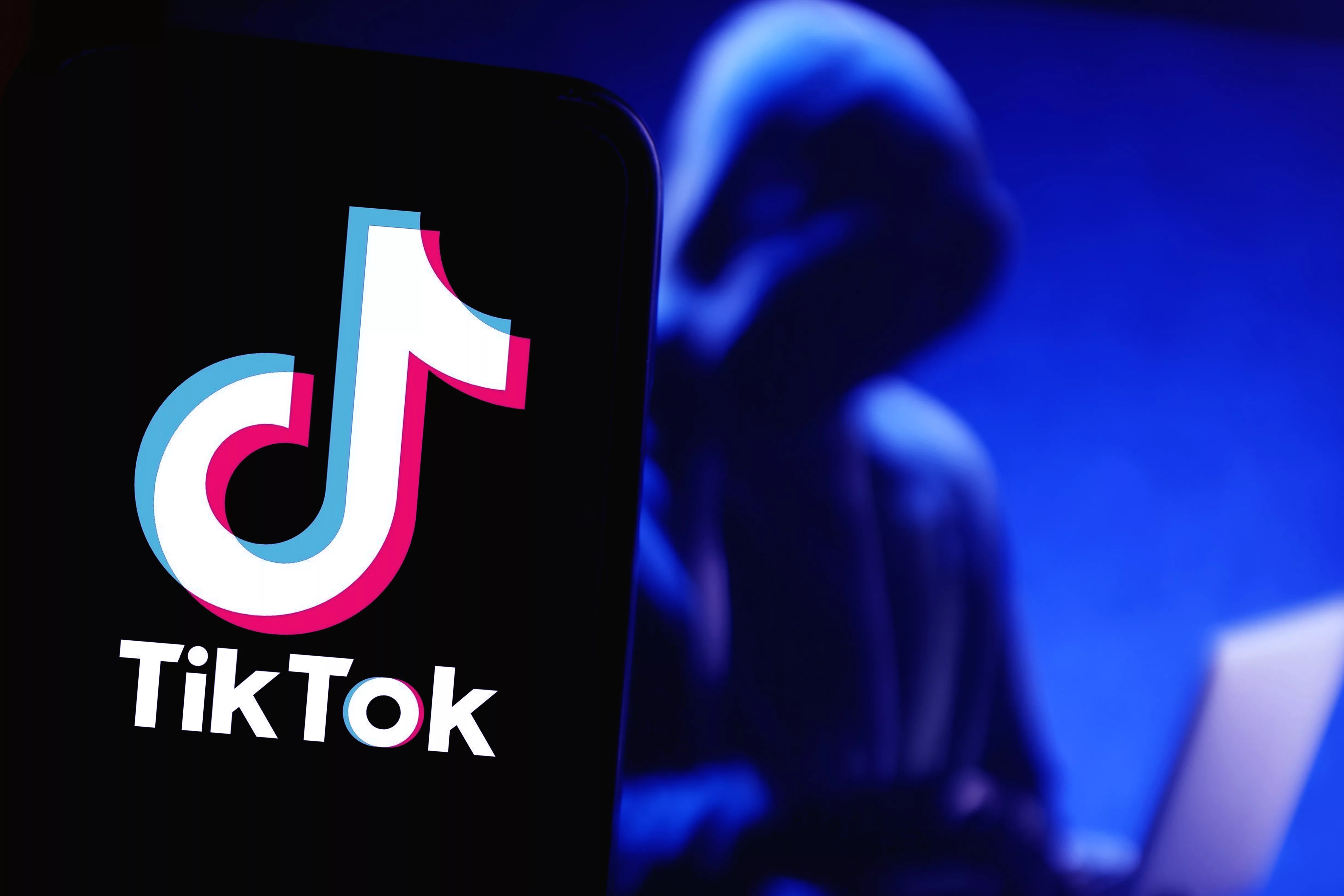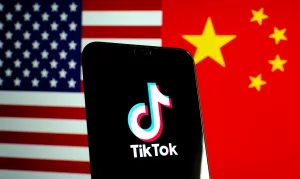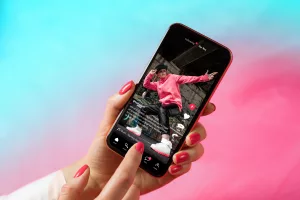
The potential security risk of the social media giant TikTok is what inspired 3rd District state Sen. Bill Dodd to join fellow legislator Brian Jones in crafting SB 74, legislation that would ban the installation of high-risk social media applications on state-owned and issued devices.
In other words—no more #DanceTok in the halls of the California State Capitol, folks.
TikTok, the popular online short-form video platform, is owned by Chinese tech company ByteDance and in recent years has become something of the internet poster child for unease over its security of user information.
“I am not willing to sit around and suggest in any way shape or form that if it’s owned by the Chinese government, that they don’t have any way of accessing this important information,” says Dodd. While ByteDance is privately held, the Chinese Communist Party holds a “golden share,” or about 1% stake in the company, a common way for Beijing to hold ties to its largest companies. ByteDance insists the government has no voting rights in company operations.
And the security risk becomes exponential when the potential exposure is from government-issued devices.
The bipartisan-supported bill, coauthored by the Napa Democrat and Jones, a Republican out of San Diego, passed the state Senate unanimously in late May.
While the legislation encompasses any high-risk application, the ban singles out TikTok as a primary area of concern, a point Dodd doesn’t shy away from. Dodd says that, while the online giant is trying its best to appease Congress, it ultimately continues to fight the various pieces of legislation that are attempting to regulate the company and protect U.S. user data.
FBI Director Christopher Wray warned last fall that TikTok could potentially be used for espionage by a non-democratic government. Since then, nearly two dozen states have

instituted limits for use of risky social media applications on government-controlled devices. Additionally, the Biden Administration has approved a limited ban on TikTok on federal devices and the U.S. military prohibits its members from using the app on government cell phones and computers.
User data from TikTok is partially stored in a data center in the United States, but data is also stored in Malaysia and Singapore, according to TikTok, which has headquarters in Los Angeles and Singapore. ByteDance insists it safely encrypts all data, both in transit and at rest, in the interest of protecting user information.
Still, Dodd says, the threat to national security from foreign-owned companies can’t be taken lightly. “Clearly there are bad actors out there and we can’t afford to let them in,” Dodd said, following the state Senate vote.
SB 74 directly calls out “countries of concern”—including China, Russia, Cuba, Iran, North Korea, Sudan and Syria—a reference to those named in the U.S. International Traffic in Arms Regulations which are prohibited from U.S. Defense-related imports or exports.
TikTok, for its part, says it has taken steps to promote greater cyber safety. The company now regularly publishes what it calls “transparency reports,” which are meant to provide visibility “…into how [we] uphold Community Guidelines and respond to law enforcement requests for information, government requests for content removals, and intellectual property removal requests,” as is stated on the official TikTok website.
Under the “privacy” section on its website TikTok writes, “We deploy strong restrictions on employee access, including preventing keys that decrypt user data from being accessed by employees without authorization and a demonstrated need to perform their job.”

SB 74 follows in the footsteps of similar state legislation meant to rein in TikTok. Montana was the first to issue a statewide ban on the private use of TikTok, which will take effect in January of 2024. Five lawsuits have already been filed against the state by TikTok “creators” who frequently use the platform to generate revenue; the company is footing the legal bills.
Though Dodd’s legislation is set to restrict all state-owned and -issued devices when it comes to high-risk social media applications, there are certain exemptions within the bill. Law enforcement, for instance, will be permitted to use such applications for official communications to the public on behalf of the state.
Santa Rosa City Council Member Jeff Okrepkie has been following SB 74 from a distance, knowing that several bills eyeing TikTok-type apps are cropping up across the country. He says regulation of tech giants should be left to the discretion of “each organization, whether public or private. “[They] should have the ability to implement whatever cyber security measures they deem necessary in order to ensure privacy and safety of their technology resources,” says Okrepkie.
ByteDance is a Chinese company with headquarters in Beijing—which means it is under tight scrutiny by the Chinese Communist Party. Which raises the concern that, if it was ever prompted, ByteDance would have to make TikTok data available to the government, as is typically required by the CCP.
Still, some legislators approached the idea of limiting social media with due caution. State Sen. Tom Umberg, of the 34th District composed of Orange County and Long Beach, told Sacramento TV station KCRA earlier this year that, “the legislature will need to carefully consider the balance between protecting data and banning a form of communication.” Dodd says he agrees with this statement and believes that they have given these topics due consideration. Umberg eventually voted in favor of the bill.
The growing concern surrounding the safety of TikTok led the U.S. House of Representatives Committee on House Administration last December to authorize the removal of the application from all House devices. This opens the door to the possibility of a broader federal ban down the line—a move which would face an extensive amount of legal and political hurdles, including the question over First Amendment protections.
Consumer privacy
Talk of broader limits on TikTok has been going on for some time. The overarching concerns regarding the application among U.S. lawmakers and regulators involves not only anxiety over national security—but about consumer privacy as well.
Reaching an acceptable resolution to the concerns are as challenging as they are broad ranging—from ByteDance selling its stake in TikTok to a U.S. company to, as has been widely suggested, a complete ban of the platform in the U.S.
And would such a ban have an expiration, or would it be lifted if and when ByteDance sold TikTok?
A Buzzfeed article from June of 2022 reported that ByteDance engineers in China had been repeatedly accessing American users’ private data. Buzzfeed also reported that the data collected from TikTok was not being managed by a U.S.-based security team. Instead, Chinese engineers were controlling data access and that data could potentially be accessed by the Chinese government.

Critics have charged TikTok with collecting a variety of personal information from users—from browsing history and fingerprints to location and voice data. Because of the intricacy of the artificial intelligence used in the application, TikTok can collect faceprints, keystroke patterns, messages that have been saved to drafts and any images to which a user has given the platform access.
There is a wide age range of users on TikTok. In 2019, the U.S. Federal Trade Commission fined ByteDance $5.7 million for collecting information from children under 13, a direct violation of the Children’s Online Privacy Protection Act. This led TikTok to create a “kids-only” mode; now user profiles with an age under 16 are automatically private.
A class-action lawsuit from 2021 found a federal judge in Illinois eventually granting a $92 million settlement over TikTok’s use of biometric data such as facial scans, fingerprints or iris scans. In that suit, TikTok was alleged to have illegally collected biometric data from users and disclosed it to third-party companies without the individuals’ consent. (Illinois is the only state in the U.S. that allows people to sue companies for violating biometric privacy laws.)
Documents filed in the U.S. District Court in Illinois alleged that TikTok uses a “complex system of artificial intelligence to recognize facial features in user’s videos” and that it analyzes faces to “determine the user’s age, race/ethnicity, and gender…to recommend content and profiles for the user to follow.”
An estimated 89 million TikTok users were allegedly affected. Beyond the data collection of its users, TikTok has also been accused of mining user information from draft videos that were never even posted.
TikTok says the “current versions” of the app do not monitor keystrokes or type-written content, collect precise GPS locations or identify individuals through face or voice prints.
The TikTok generation
TikTok made its U.S. debut in 2018—and gained national attention from the get-go.
The application raised eyebrows as much for its Chinese ownership, as to how the addictive nature of the media affects users—particularly young users, who can find themselves scrolling down a rabbit hole of videos, enticed from one to the next thanks to the app’s profound ability to reflect a user’s personal interests.
Sensor Tower, which monitors digital market trends, says TikTok users spend an average of 95 minutes per day on the app. And the application can sometimes be used to promote alarming fads. In 2020, for instance, the so-called “Benadryl Challenge” went viral, in which participants would take large doses of the antihistamine in order to induce hallucinations. But ingesting too much of the over-the-counter medication can lead to serious health consequences; in August of 2020, 15-year-old Chloe Marie Phillips died after participating in this “challenge.”
Other times TikTok has been a source for spreading health misinformation. One TikTok trend that gained traction in October of 2022 found TikTok “influencers” encouraging viewers to tape their lips shut to stop breathing out of their mouths while sleeping—under the dubious idea that it would prevent bad breath, snoring and lead to better sleep. While medical professionals might agree that breathing through one’s nose while asleep is generally preferred, taping lips together could be dangerous—such as for individuals with undiagnosed obstructive sleep apnea.
Even something as seemingly positive as #ADHD, which was trending in 2021 to raise awareness of the condition’s high rate of undiagnosis, resulted in a litany of misleading claims, as most of the users expounding on the disorder were not medical professionals.
Besides the sometimes-dubious activities that take place on the short-form-video app, other concerns persist about the mental health of TikTok’s young users, as correlations have been made between the rise in popularity of social media and the increased rate of teen depression.
According to the Substance Abuse and Mental Health Services Administration, between 2004 and 2019 the rate of teen depression nearly doubled. Pew Research Center found that in a survey of about 1,300 U.S. teens, some 67% say they sometimes use TikTok, with 16% saying they use it frequently. Overall, kids under 18 make up 28% of TikTok users; age 19 to 29 composes 35%, its highest user age demographic.
In 2019, TikTok admitted to censoring videos from the users it identified as LGBTQ+, disabled or overweight—ostensibly for the purpose of preventing bullying. Critics, however, pointed to this as the very sort of censorship that can be most detrimental to the mental health of its younger users.
The increase in curated content online can also feed into extremist perspectives. The Counter Extremism Project published a report in 2021 which showed that “more than 70% of extremist content found on YouTube was recommended to users by the algorithm. And it incentivizes users to share attention-grabbing content that gets picked up by the feed.”
In 2022 TikTok announced a partnership with Tech Against Terrorism in an attempt to combat extremist content. “TikTok takes an uncompromising stance against enabling violent extremism on or off our platform,” the company says.
TikTok’s algorithmic recommendations are determined by how much time a viewer spends watching particular videos. According to information leaked in 2021 to the New York Times, the two categories the application pays particular attention to are “retention” and “time spent.”
TikTok’s “ultimate goal,” as described by the leaked document, is to gain a mass number of active users. And to do this, the app wants to keep people scrolling from video to video for as long as possible. This is where its complex algorithm comes into play and where watch-time is key.
For the younger demographic, TikTok’s algorithmic recommendations can be particularly effective in maintaining heavy viewership.
In the Times article, “How TikTok Reads Your Mind,” Guillaume Chaslot, the founder of Algo Transparency, which studies YouTube’s recommendation system, discussed the potential hazards that come with TikTok.
Chaslot detailed how the algorithm on the short-form video application can determine a variety of things about a child—from knowing what kinds of music they like and to whom they are physically attracted to whether they are depressed and susceptible to drugs.
“There’s a high risk that some of this information will be used against [a child],” Chaslot says. “It could potentially be used to micro-target him or make him more addicted to the platform.”
Long-term impacts
So far it’s been difficult to pinpoint what, if any, direct impact TikTok might have on the brain, as most of the studies published have focused heavily on correlation data. A 2019 study published in Nature Communications, titled “Accelerating Dynamics of Collective Attention,” for instance, illustrated how the increase in social media content competing for a “finite collective attention” leads to a decrease in the attention span of people over time. But apps like TikTok are still too new for any long-term ramifications to be known.
In 2023, TikTok claims over 1.67 billion users globally, out of which 1.1 billion are active monthly users. More than 150 million users are in the U.S., its highest audience globally. The company has registered nearly $2.5 billion in revenue in 2023—and that’s just the first quarter.
Meanwhile, as TikTok’s viewership, users and revenue continue to grow—so do calls to rein it in, if not ban it altogether.
The U.S. government taking steps to regulate big business is common practice, says Dodd, highlighting the military’s prohibition of TikTok on cell phones as one of many precedents. “This is nothing new,” he says.
He believes his legislation will have two benefits. “The first benefit of course is to protect the state assets from being hacked by these foreign applications,” says Dodd.
Second, he says, is in setting an example for others to follow. “We’re making sure that nobody uses any state application, state computers or anything for the purposes of downloading these types of programs.”
Dodd describes AB 74 as a “common sense, bipartisan” place to start. And while he’s confident there are “good people” representing the company, he still insists “the ownership of this company is the Chinese government.”
Email Associate Editor Rosie Padilla at rpadilla@northbaybiz.com.



